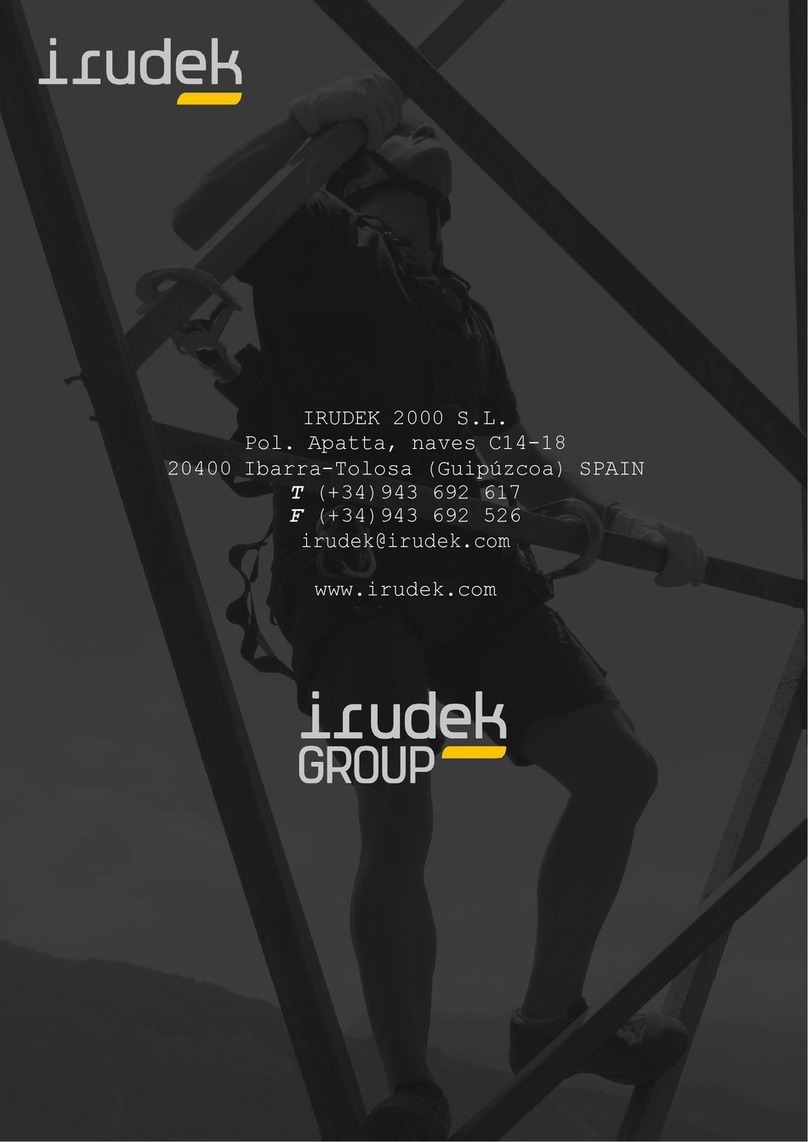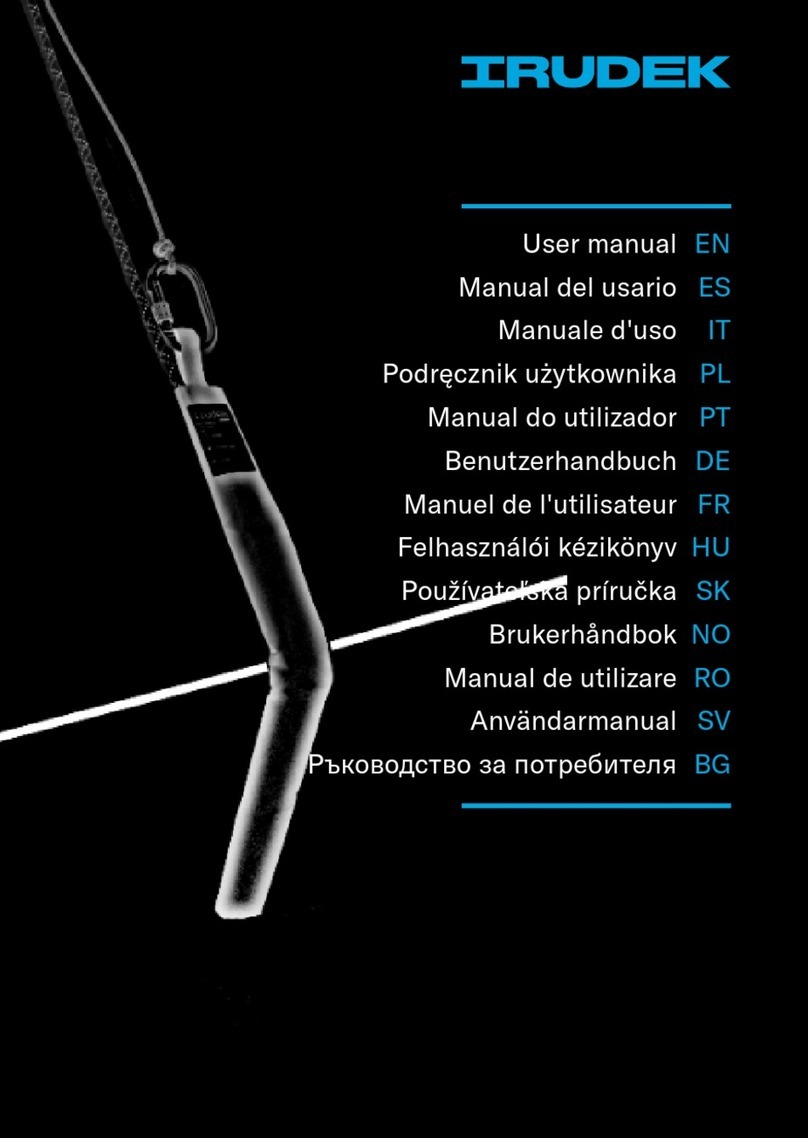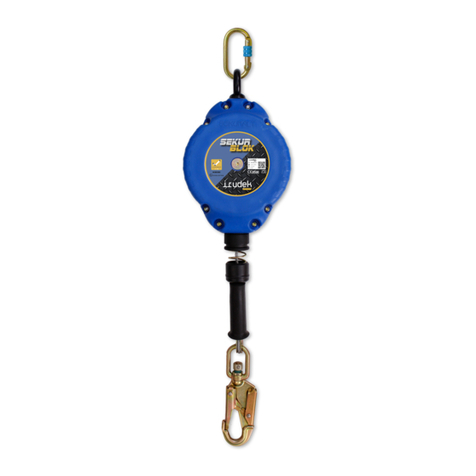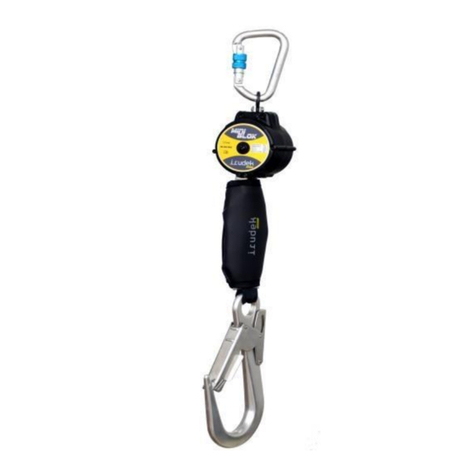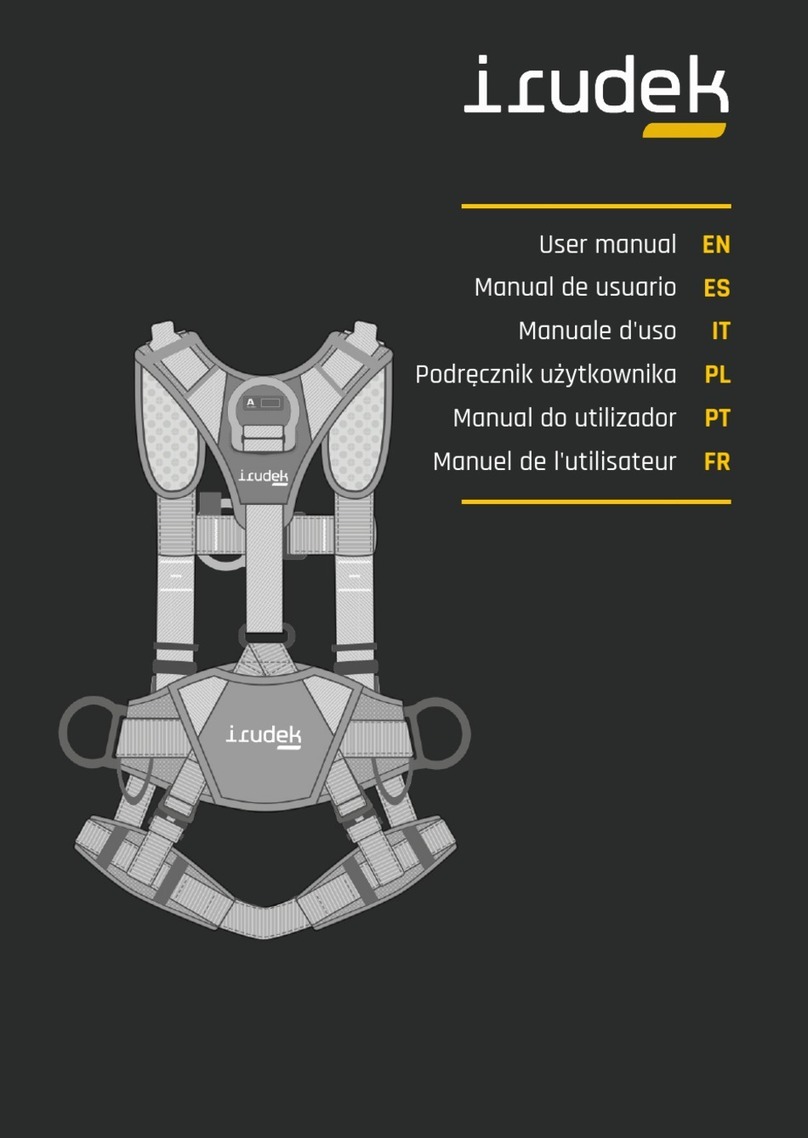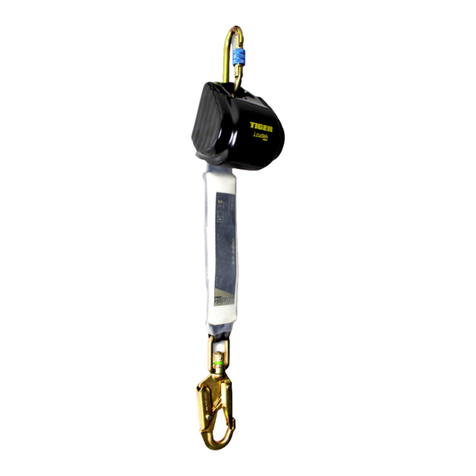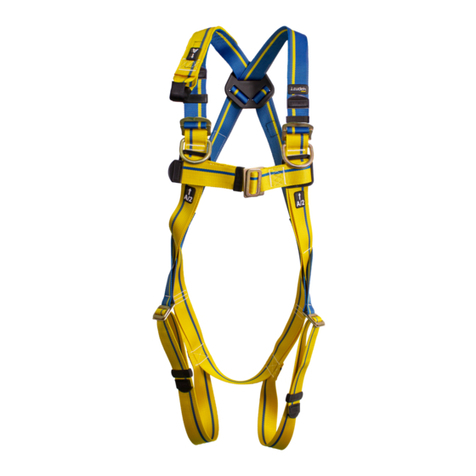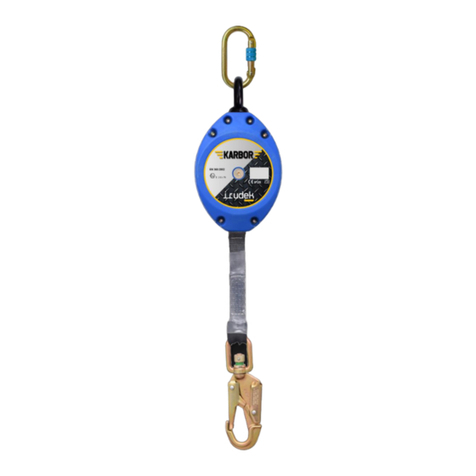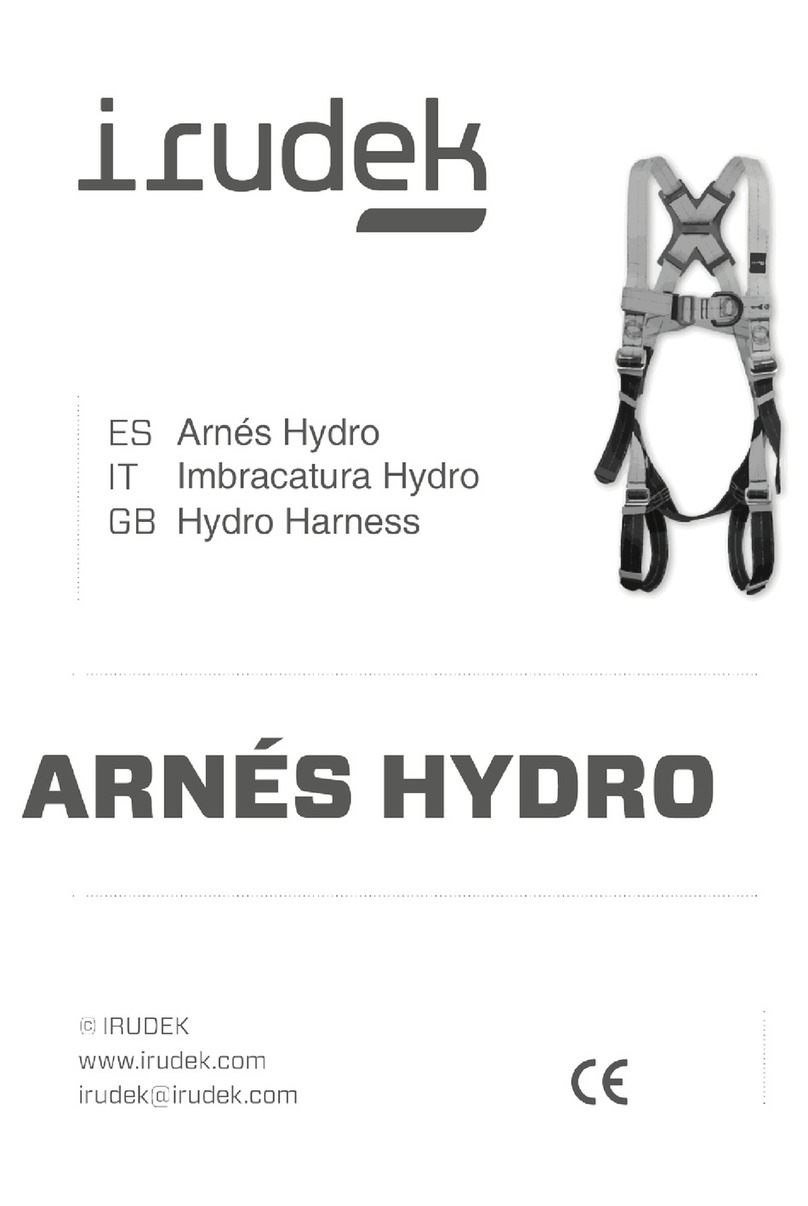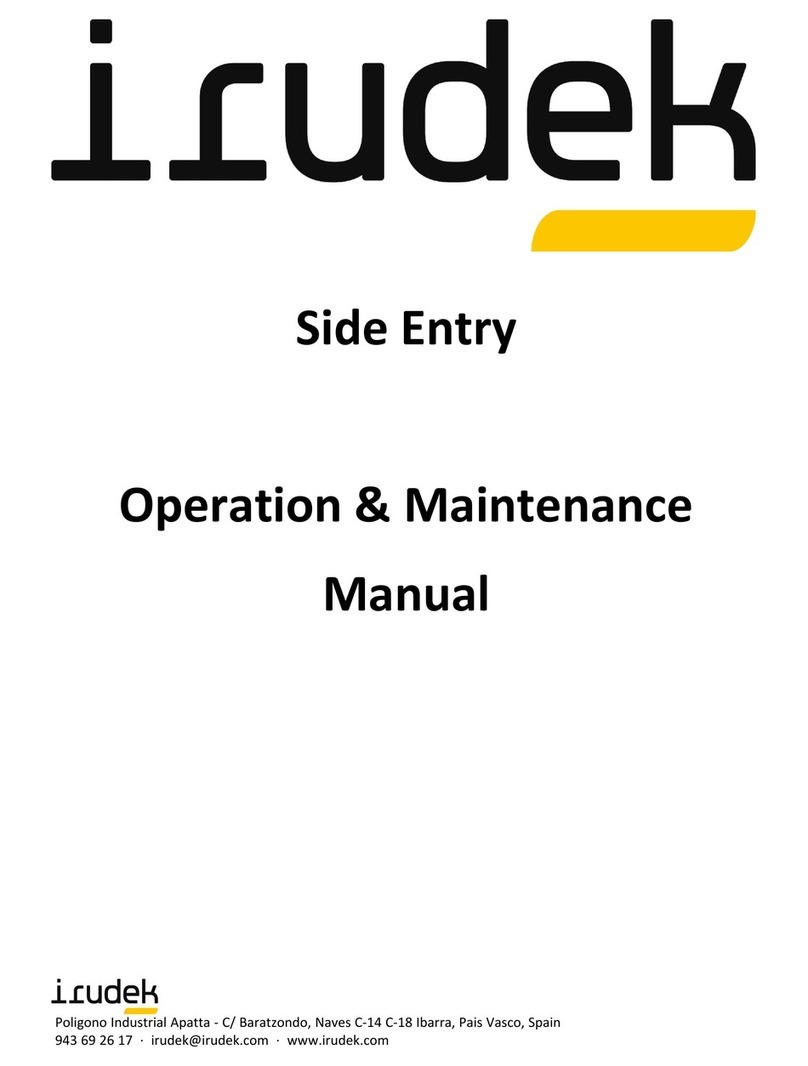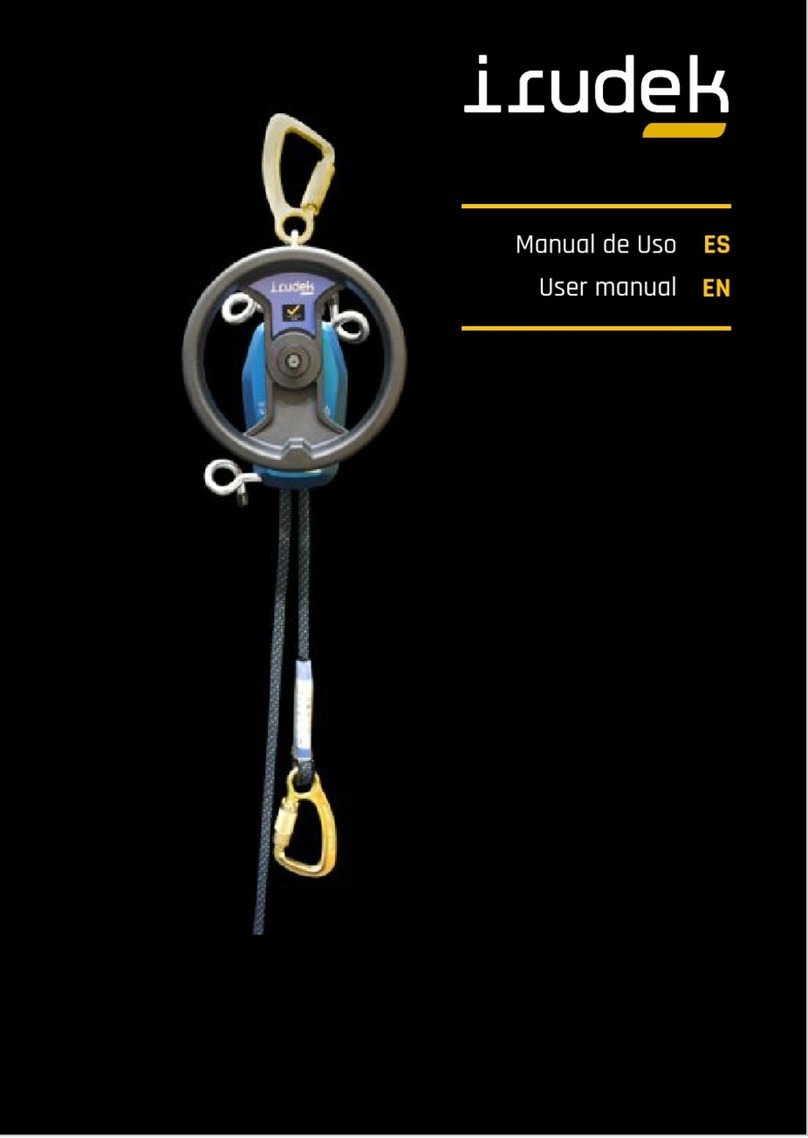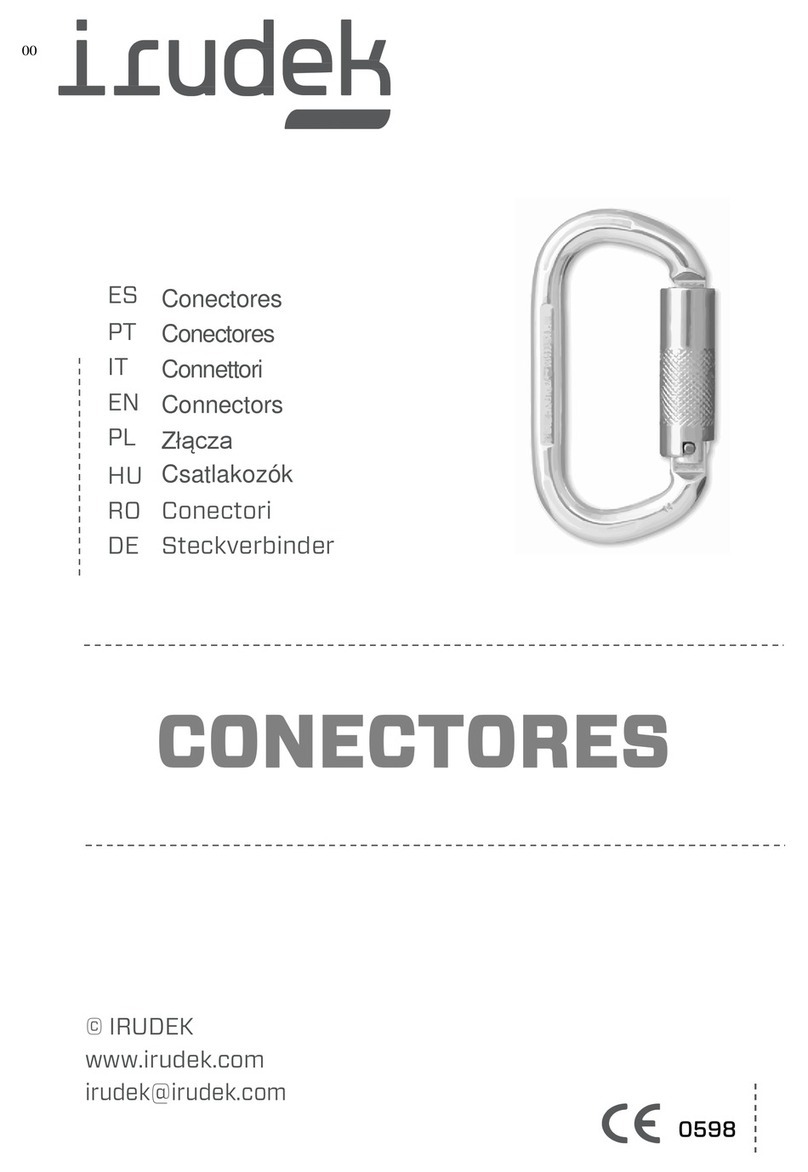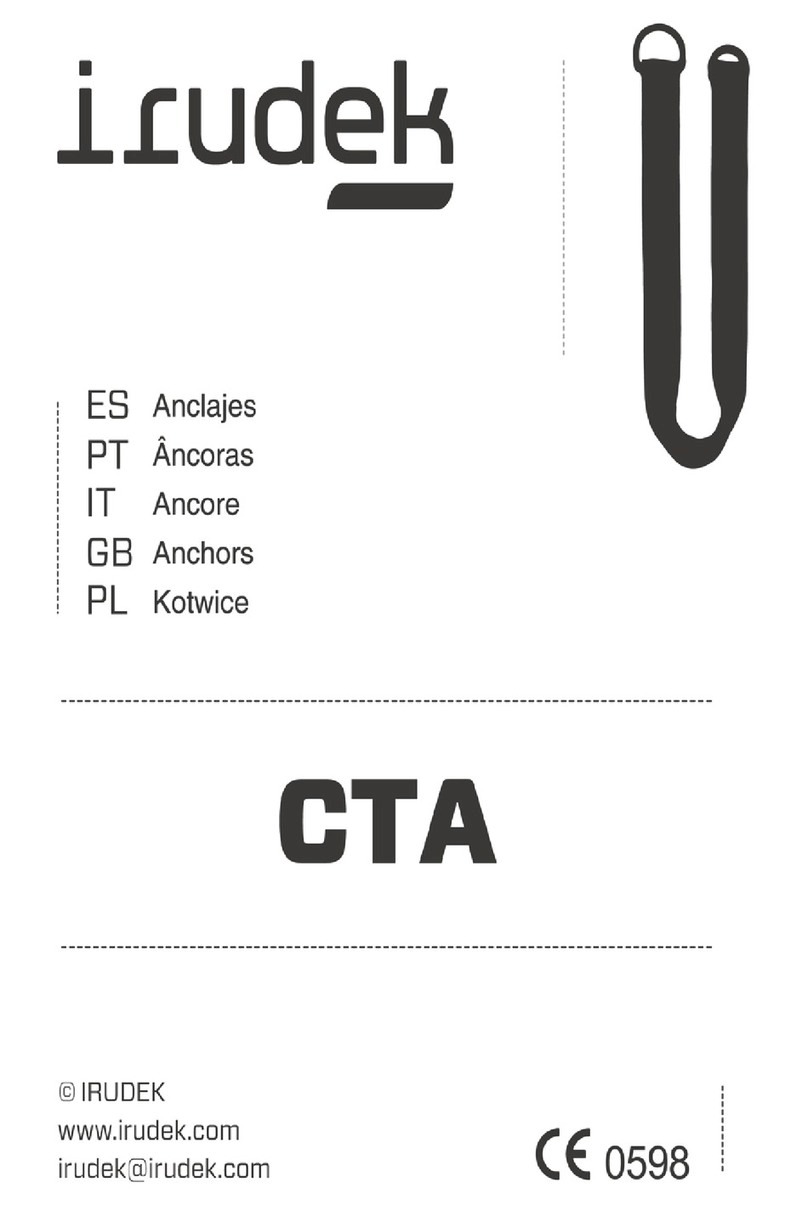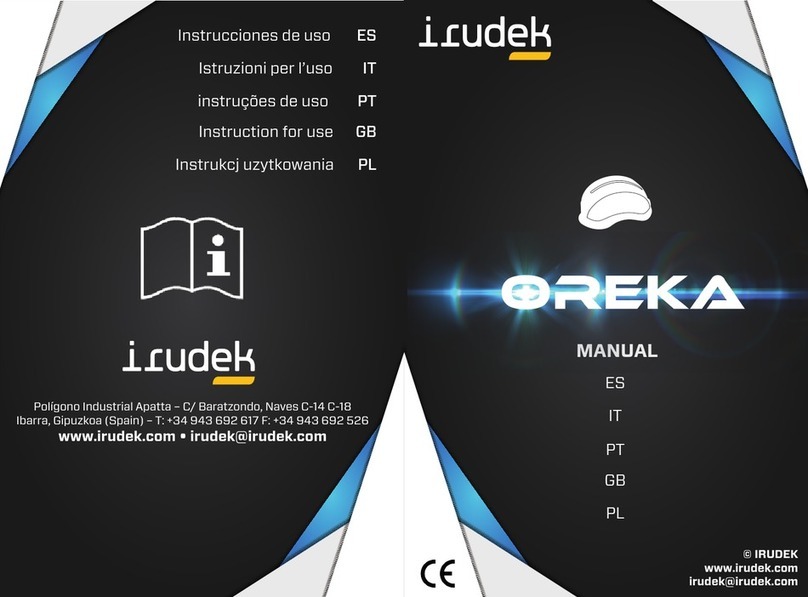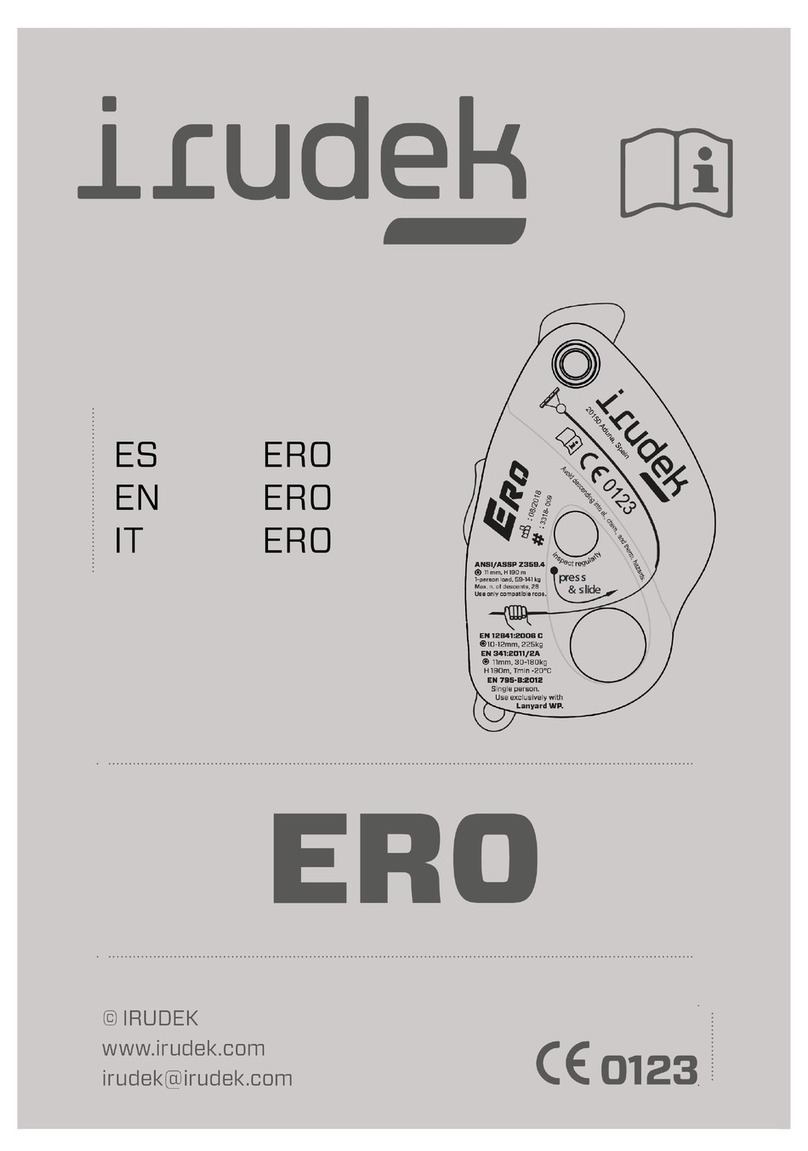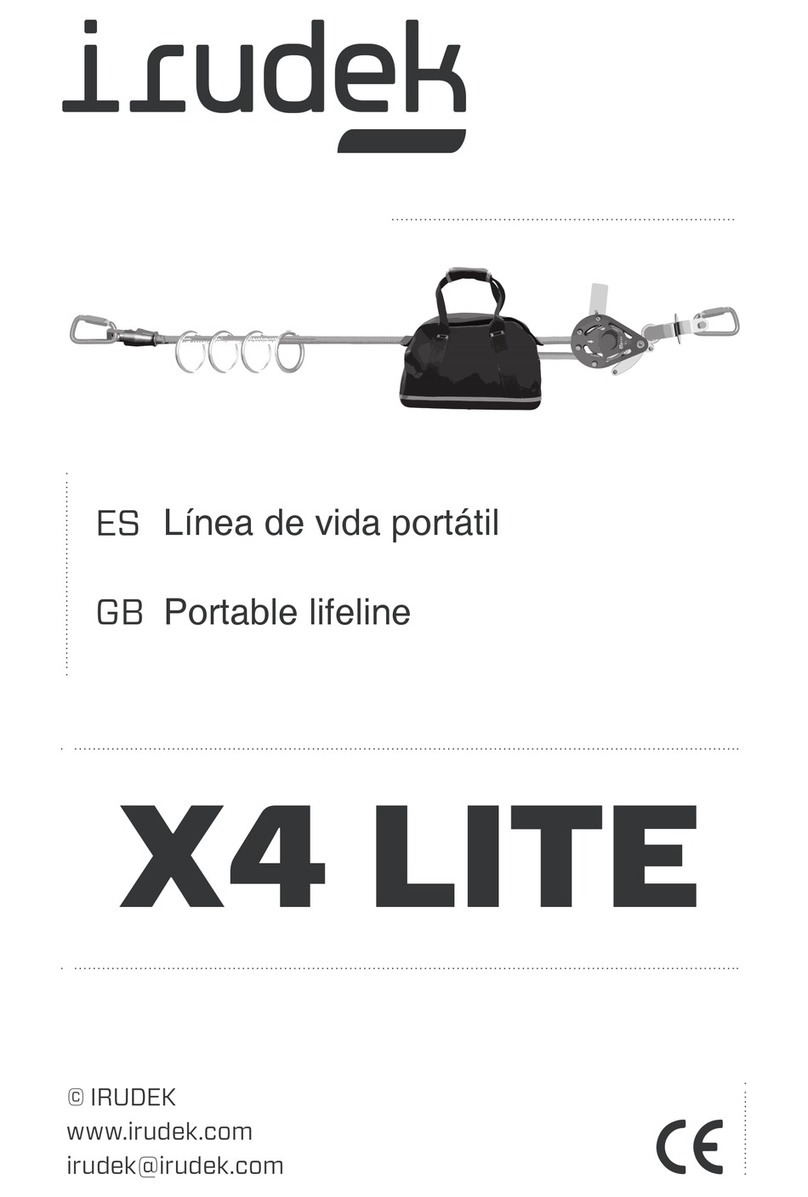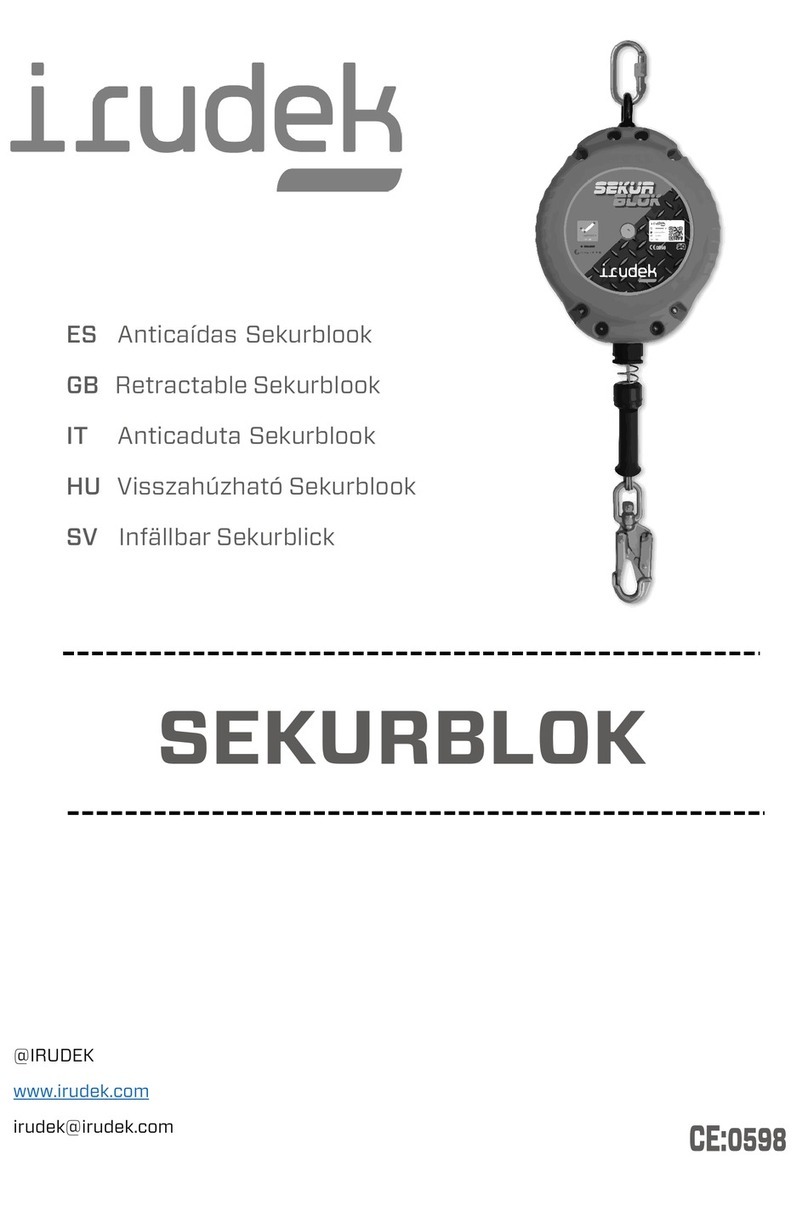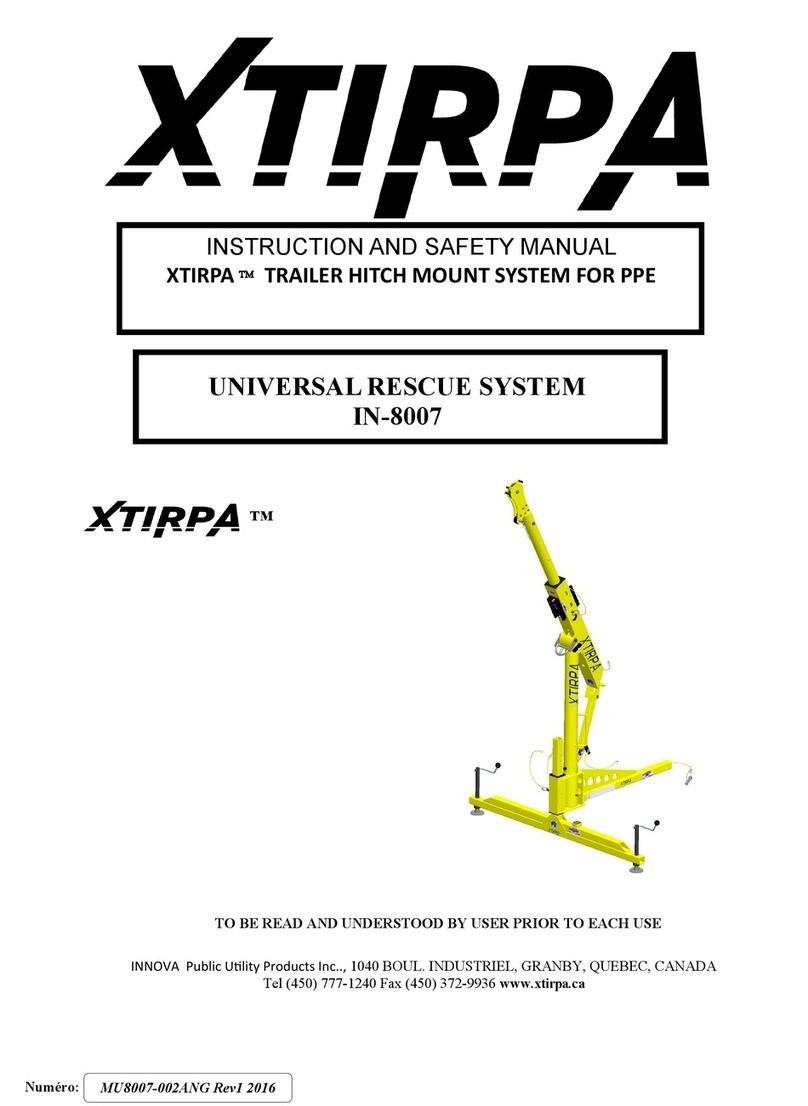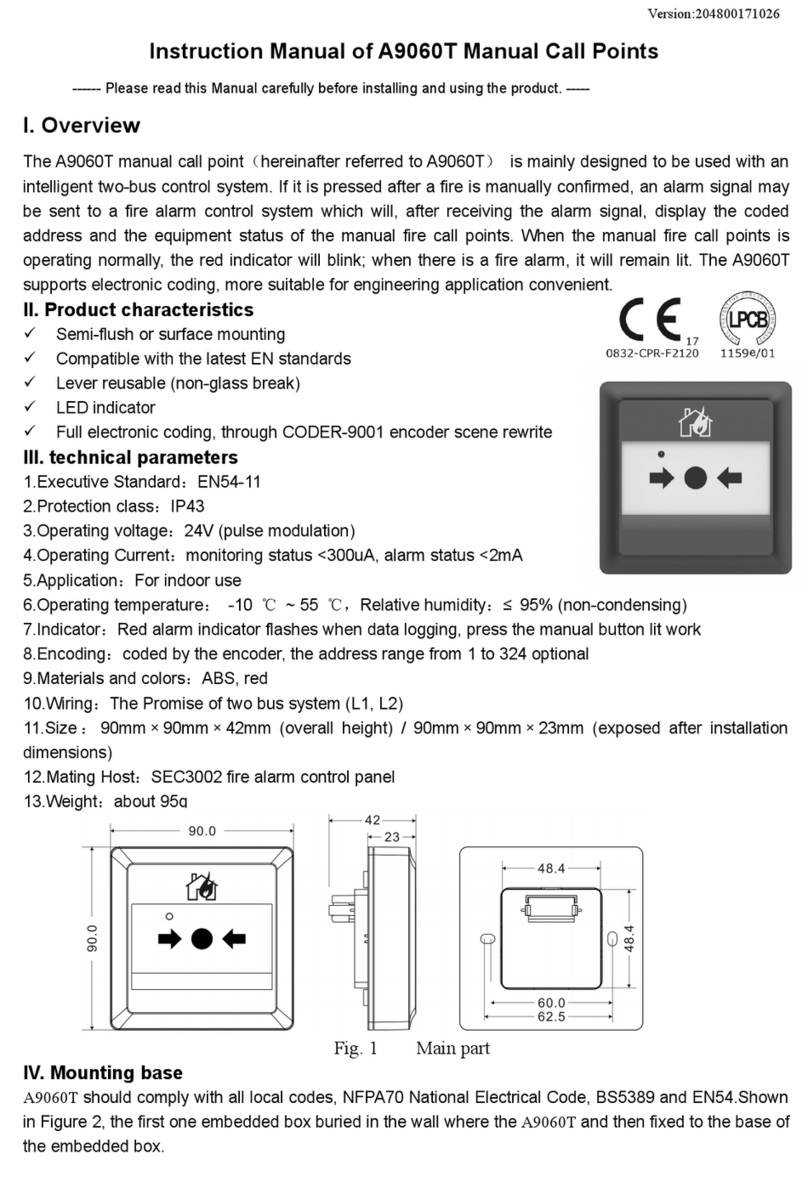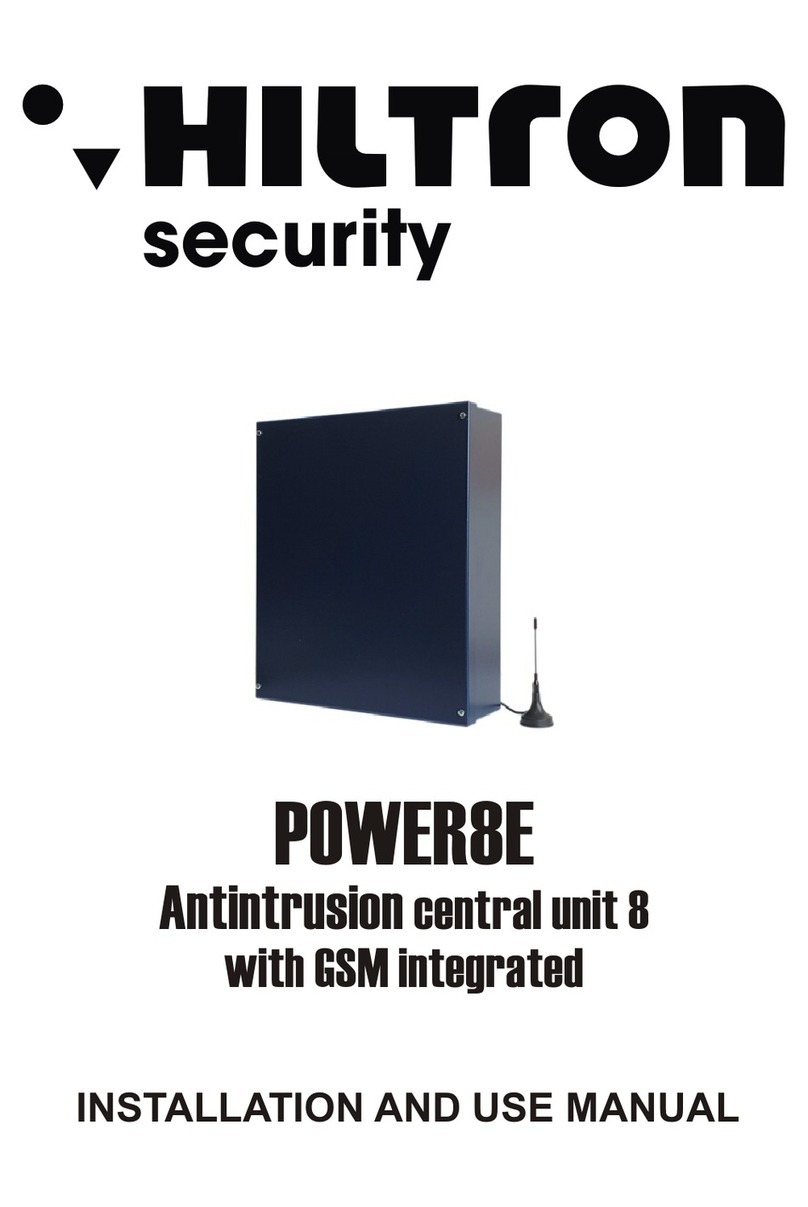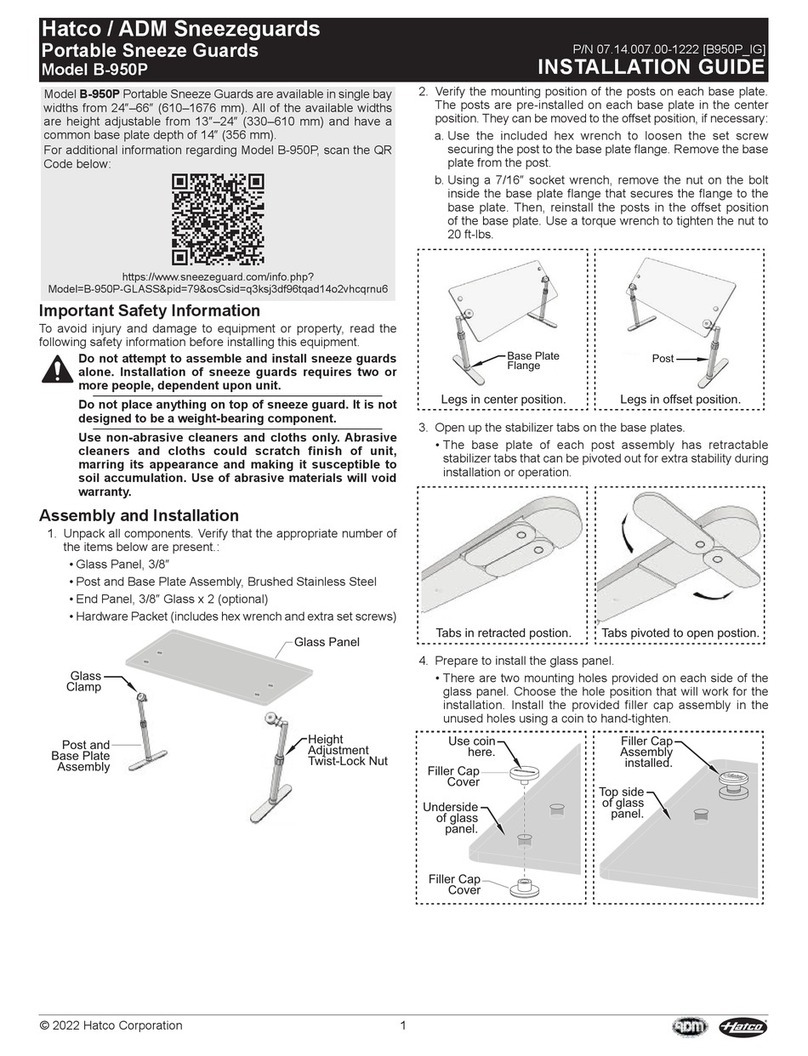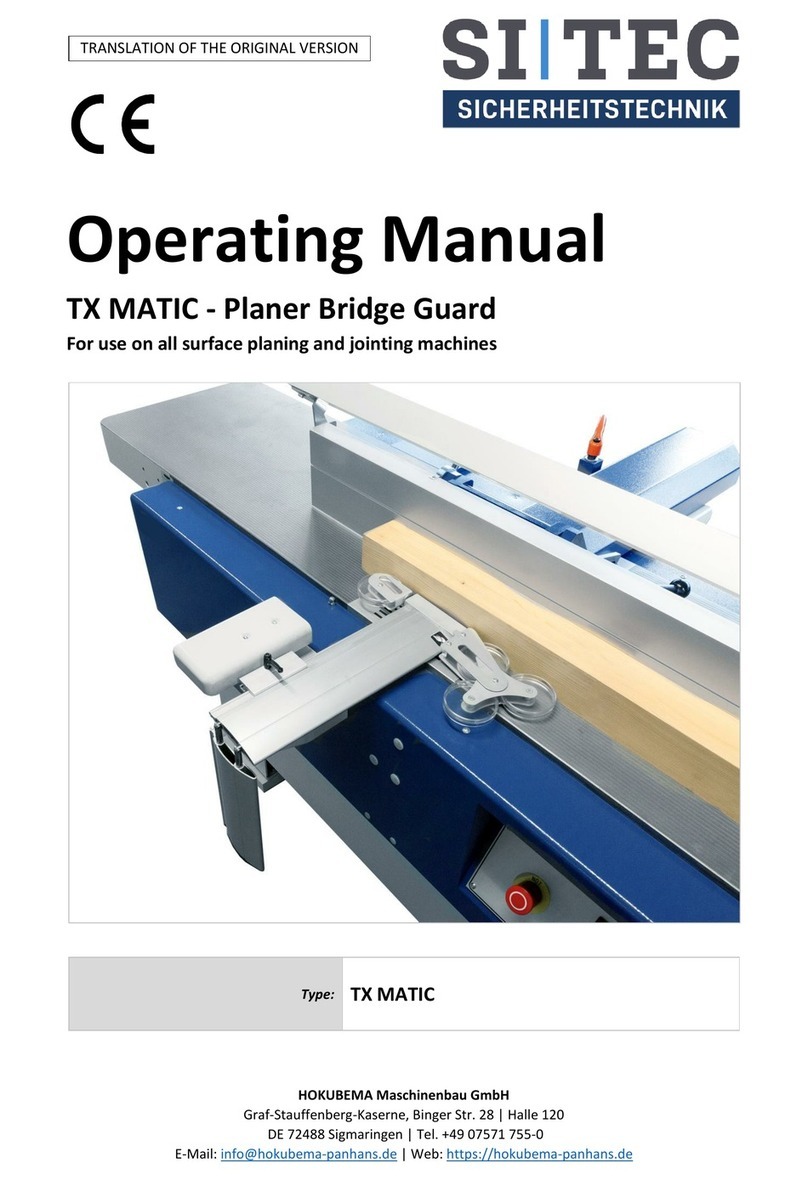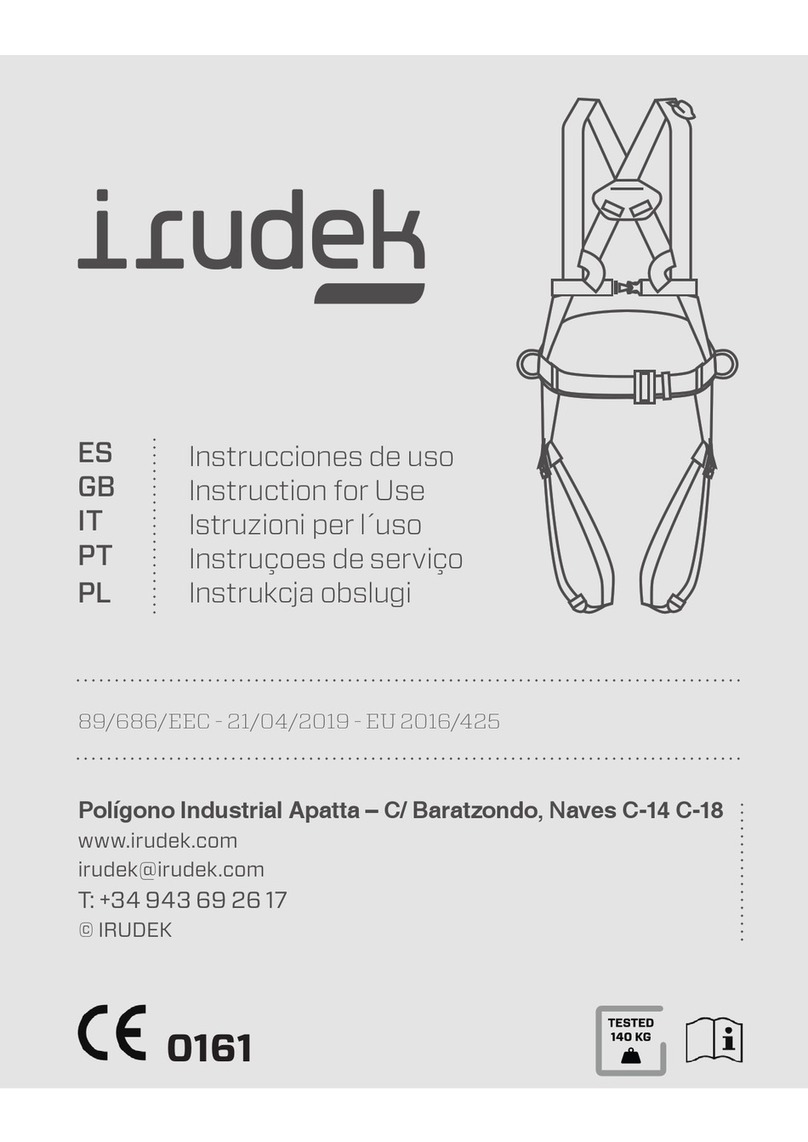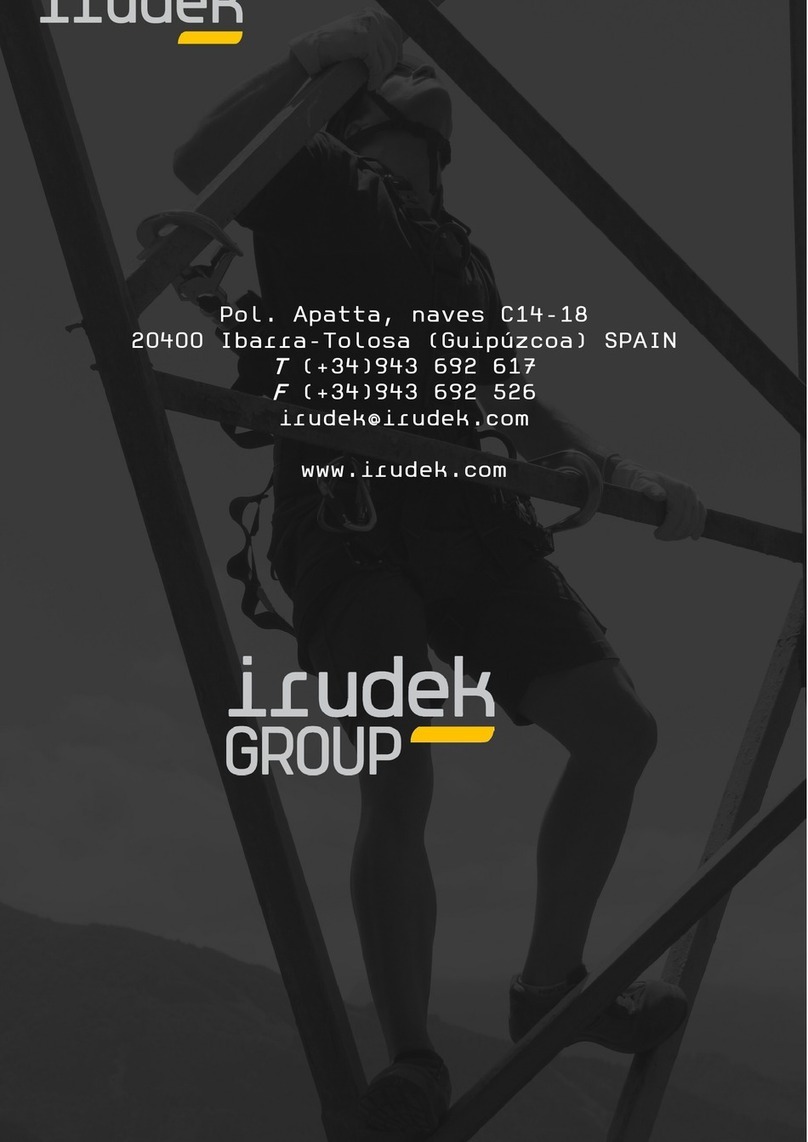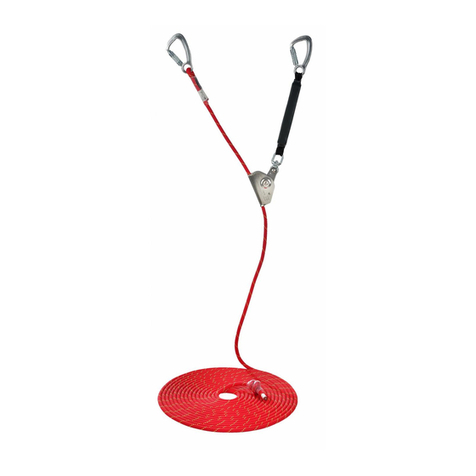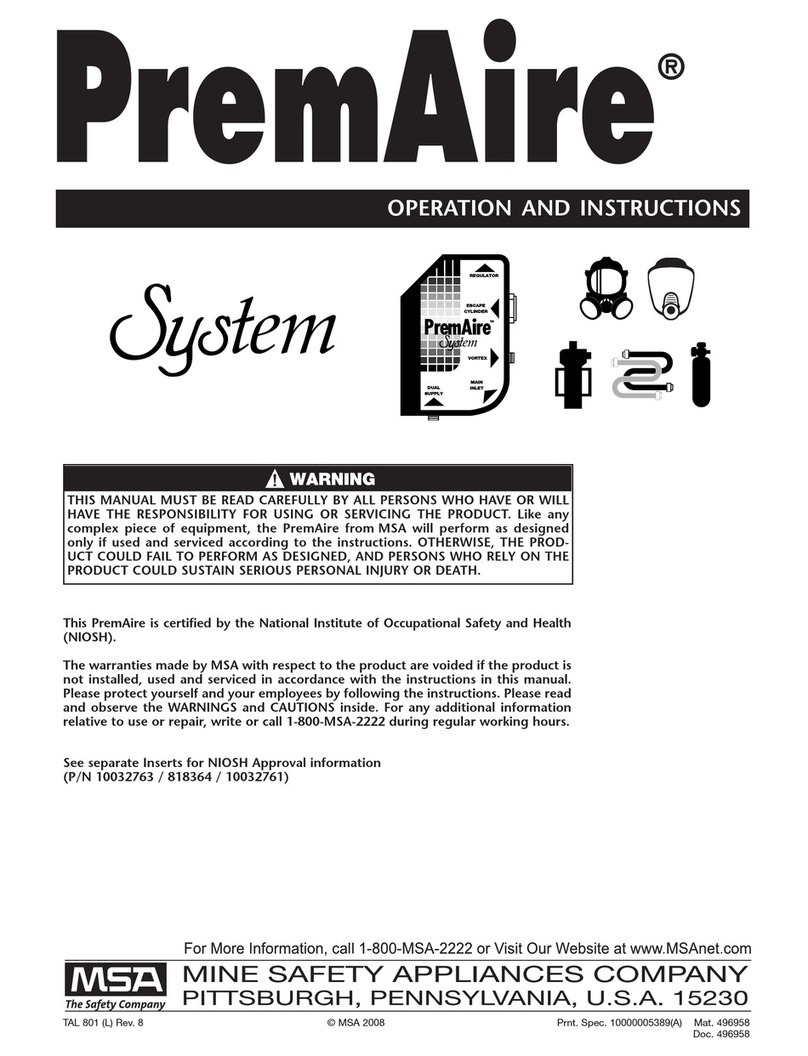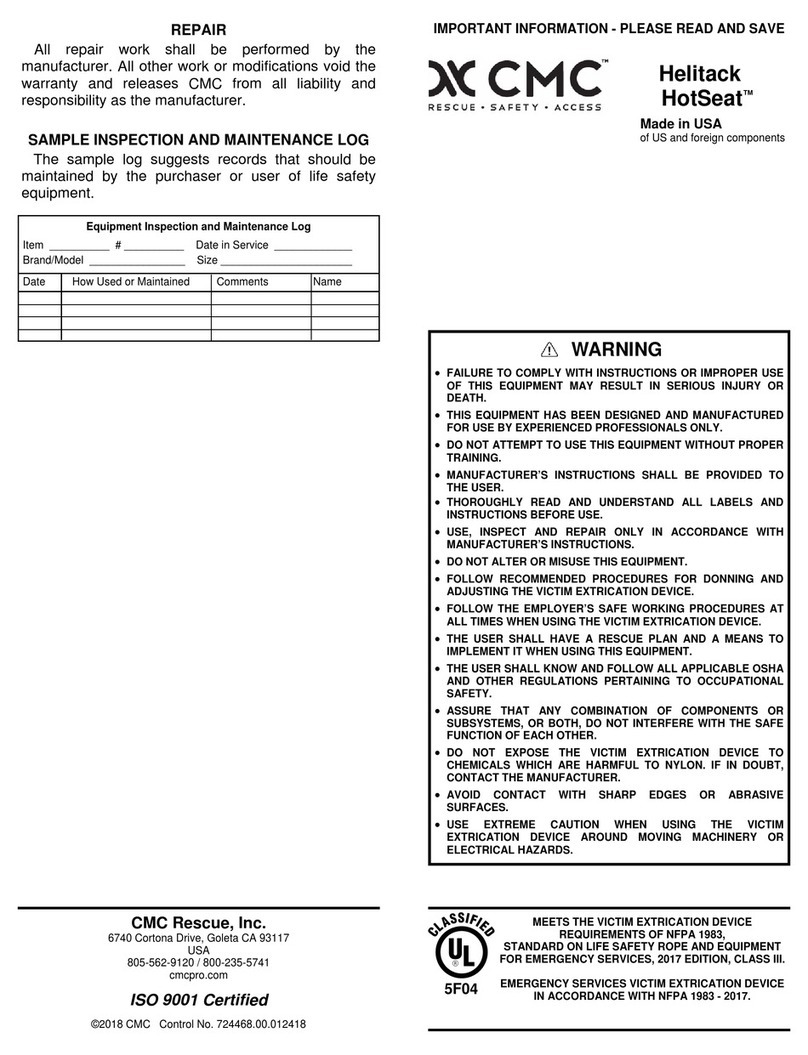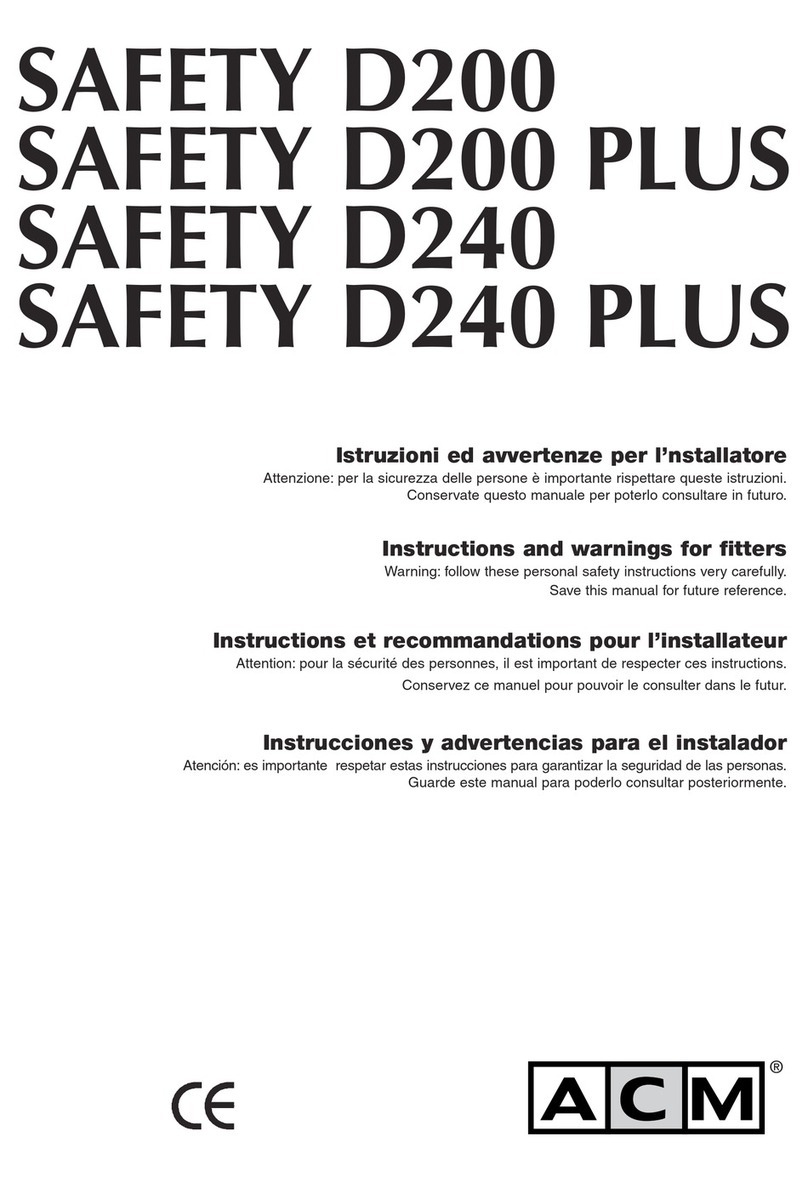
1.2
Userrequirements
•
Read these instructions for use thoroughly before using this product. You may only
use this product after you have read and understood these instructions for use.
•
This product may only be used as a descender and rescue device or for work positio-
ningaccordingtoEN12841-Cforpersons.
•
This product may only beused by max. two persons at a time.
•
Youmay only use this product if youare mentally and physicallycapable of
doingso.
•
PPEequipmentis mentas personalequipmentforeveryuser.
1.3
Visual and functional inspection
•
The annual visual and functional inspection must be carried out by or an
authorized partner. offers trainings for that purpose.
•
This product must be inspected (e.g. damage of the rope etc.) before and after its use
bytheuser.
•
If the product has been subjected to heavy loads (e.g. due to a fall) , it must be sent to
for inspection. Don’t forget to give us all necessary information
(where and how this product has been damaged).
•
Ifthe use ofthis product doesnotseem safe anymore (e.g. rope damaged etc.), send
it to or an authorized partner for inspection and repair. Do not use it!
•
Fill in the inspection protocol carefully. Each inspection must be entered.
1.4
Use
•
Thelifetimeofmetalpartsofthisproductis unlimited.
•
This product will heat up during the descent. Touching the housing or holding the
long ropeendduring descent may lead to burns.
•
Ifsharp edgescannot be avoided, always use a protecting shield to protect the
ropefromdamageorbreaking.
•
Always fix this product to an anchor device according to EN 795 before descending.
•
Do not guide the loaded rope end through the eye bolts. This would stop the
descent.
•
This product may only be used in combination with tested and certified products
(accordingtoapplicable standardsfor PPE against fallsfromaheight).
•
You may only resell this product when accompanied by the instructions for use in the
respective language of the country and the complete inspection protocol.
•
The use protocol must be filled in after each use.
•
Descendingand rescue devices,whicharestoredattheworking side,havetobe
coveredagainstenvironmentalinfluences.
1.5
Storageandtransport
•
Store this product in a dry and clean place protected from mechanical (e.g. sharp
edges) and chemical hazards (e.g. acids, gas) at roomtemperatureandprotected
from light (e.g. UV).
•
Store and transport this product in the original or an equivalent packaging. Store the
rope loosely in figure of eight loops to avoid knots, which may result in blocking the
device.
1.6
Maintenance
•
Repairs may only be effected by or an authorized partner.
•
Ifthis product has been subjet to a fall, all parts must be inspected and, if necessary,
bereplaced by .
•
This product must not be tumble-dried, dried in the sun or over a heat source
(e.g.radiator)->Air-drythisproductinanairy,shadedplace.
•
This product (the rope in particular) must not be disinfected or impregnated.
•
Do not use chemicals when cleaning the product.
•
This product must be inspected by or an authorized partner at least once a
year but in any case after maximum descent distance written on page 10. Enter the
distance in the use protocol.
1.7
Accidentsandrescueplan
•
A suspension trauma can be triggered by falling into the rope, a long descent or if a
person is helplessly suspended in the harness for a long time.
•
Preparearescueplanindicatingallpossiblerescuemeasuresincaseofemergency
before using this product.
•
Check the use and fall area and make sure to secure, mitigate or remove possible
dangers before using this product.
